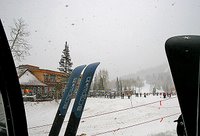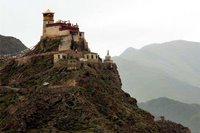It's Dumping, Oh Yeh
Finally, the Wasatch front is getting a good dumping. Edge your skis, wax the bottoms and enjoy some powder runs. Expected up to 3 feet of snow!
 Live cam Canyons
Live cam CanyonsWednesday before this dump

Bentgear.com
"Geared for Adventure"
Outdoor news and information from industry insiders
Finally, the Wasatch front is getting a good dumping. Edge your skis, wax the bottoms and enjoy some powder runs. Expected up to 3 feet of snow!
 Live cam Canyons
Live cam Canyons
The annual Nordic Wasatch Citizen Series Race is a great way to get the Nordic season underway, see old friends or start a new sport. The morning races are followed by a great lunch for all participants, than a raffle where it seems everyone wins. Race lengths for all ages and abilities. 10 a.m start.
I recently came across this article about the new train system build by China going into Tibet at an altuide of 17,000ft. Is this a good thing for the people of Tibet? or will it bring economic growth for the Tibet people. If you have a chance to go would you go?


